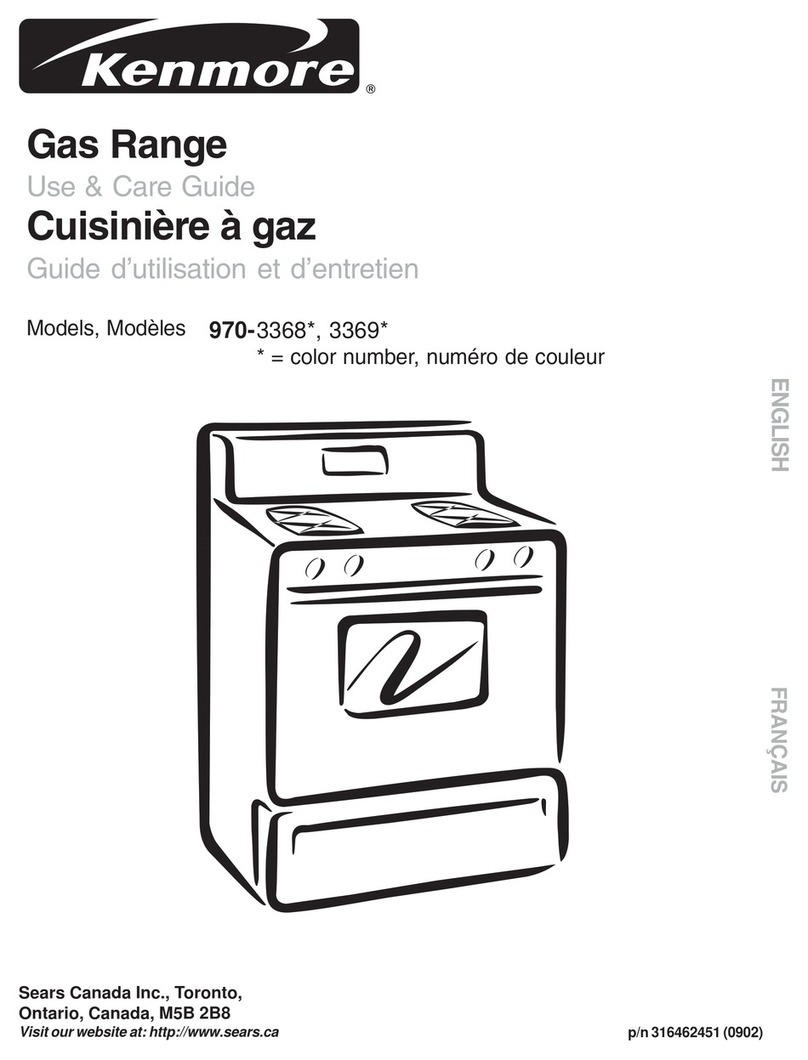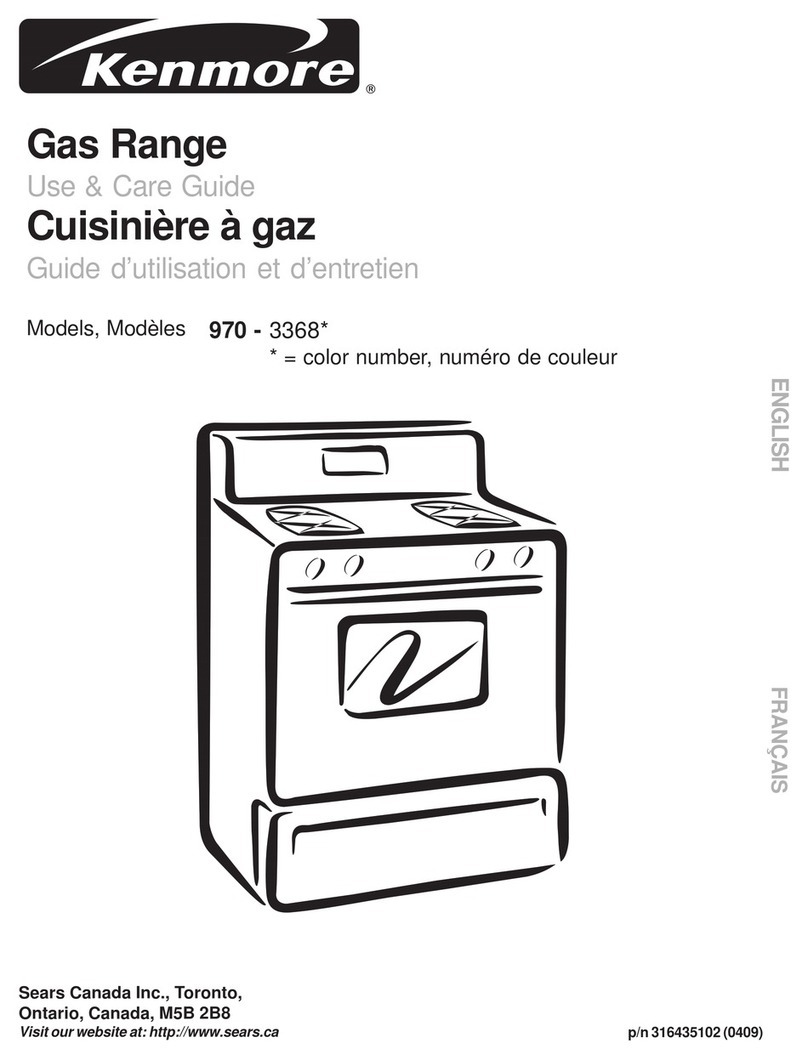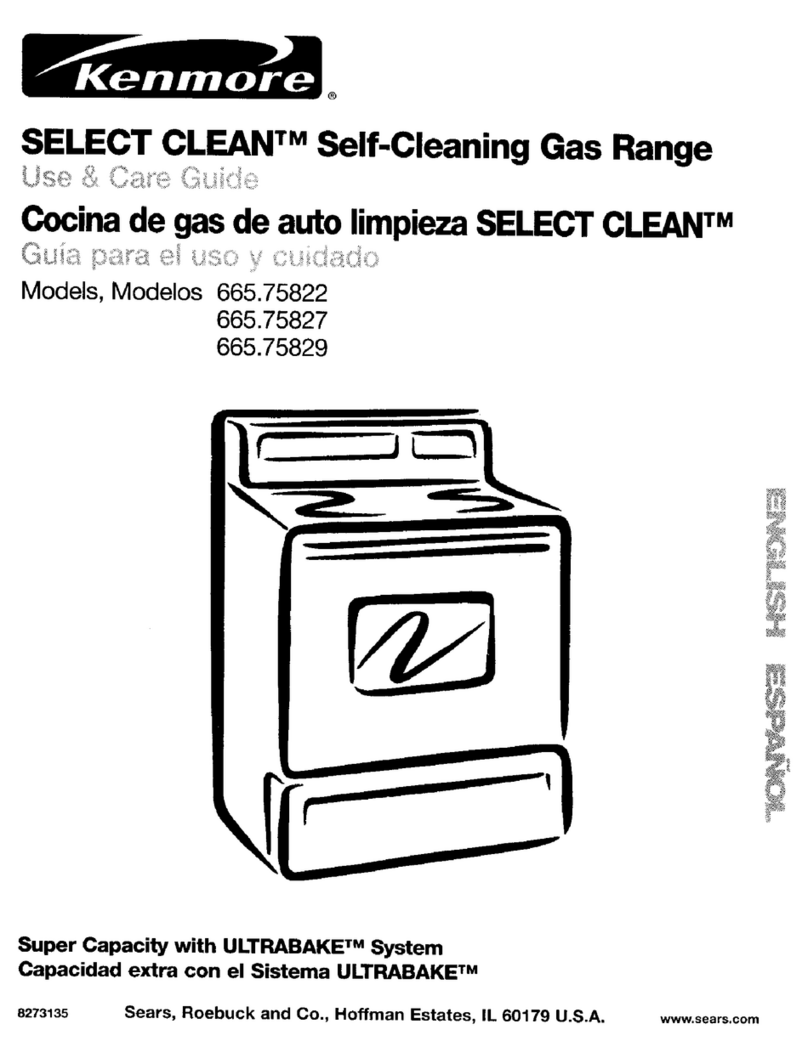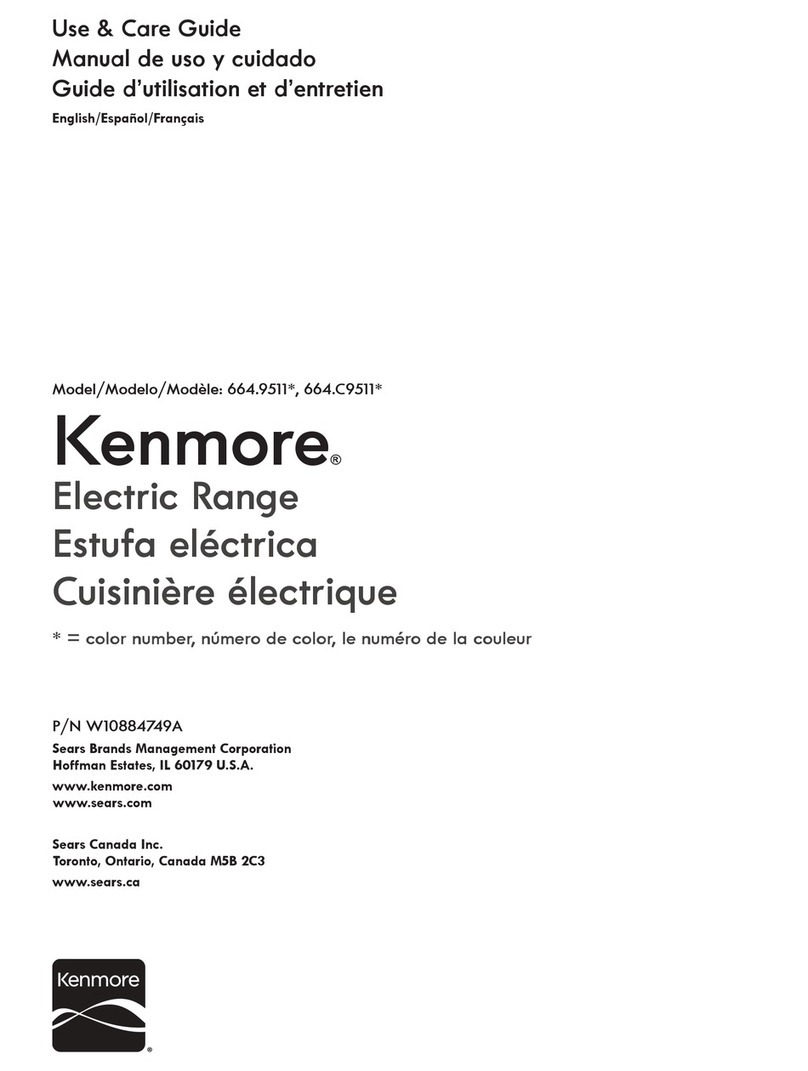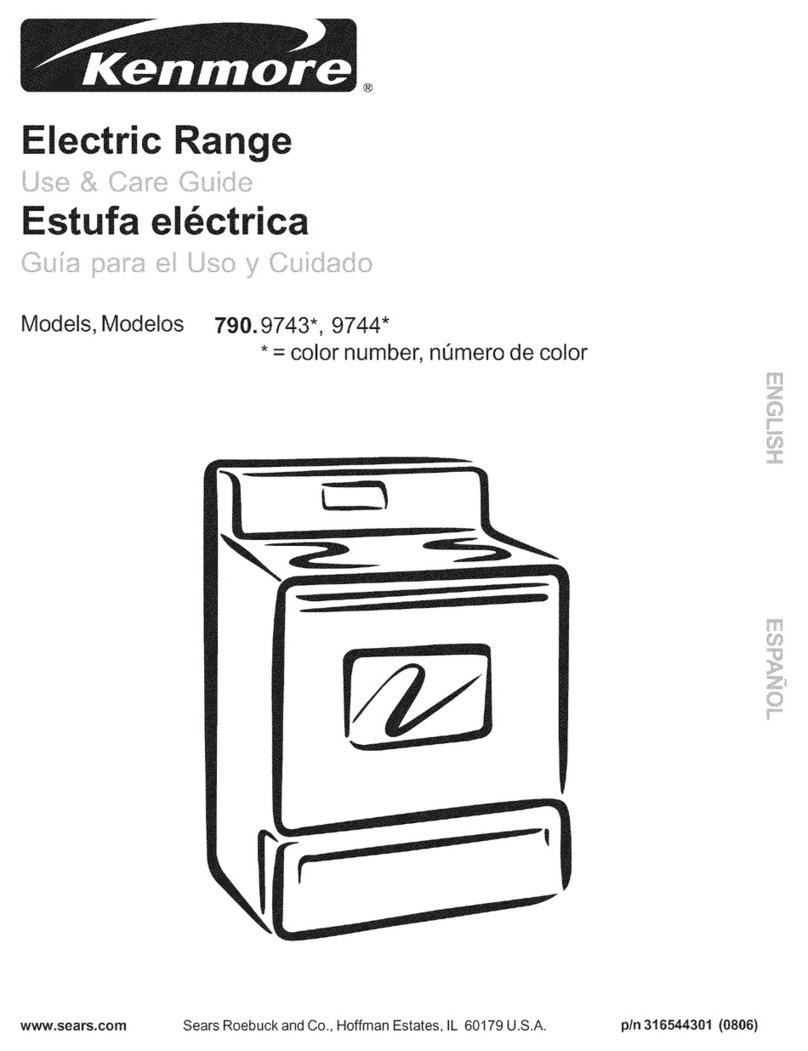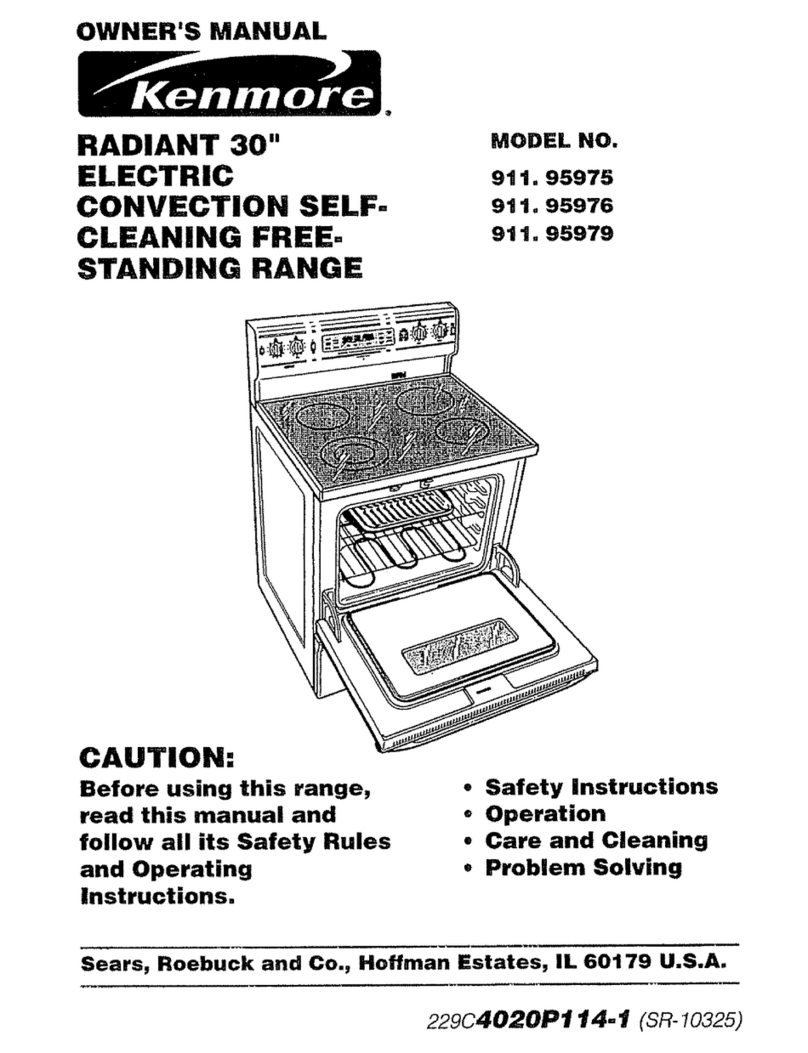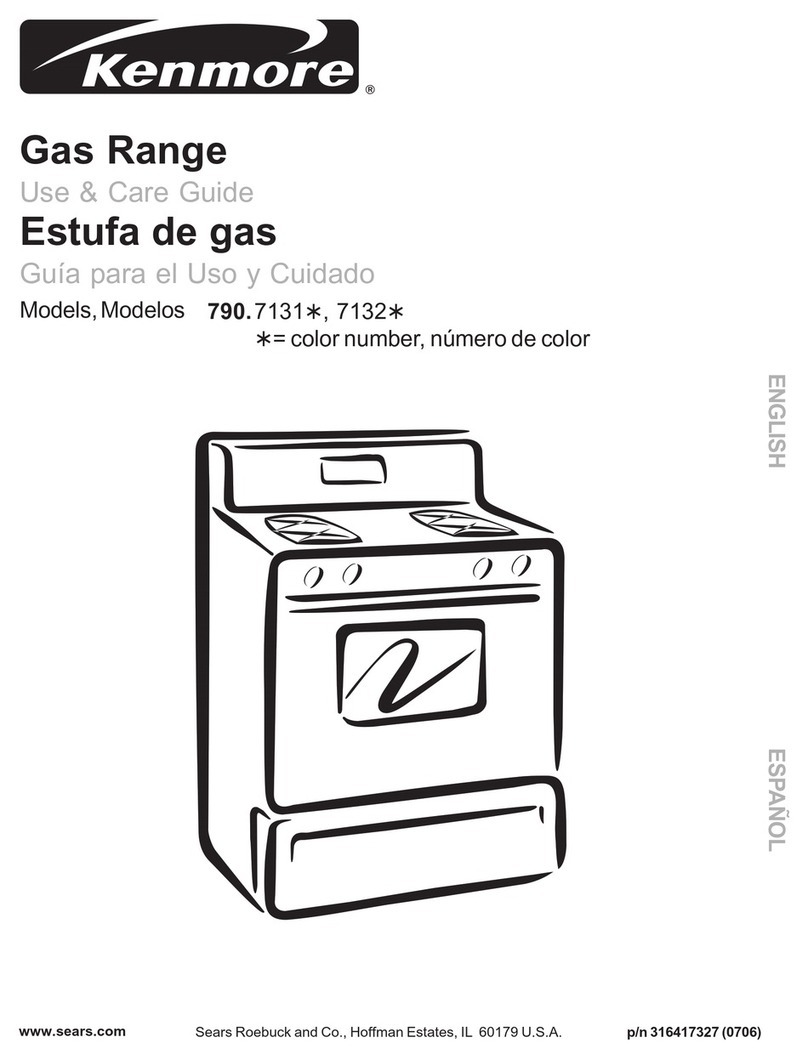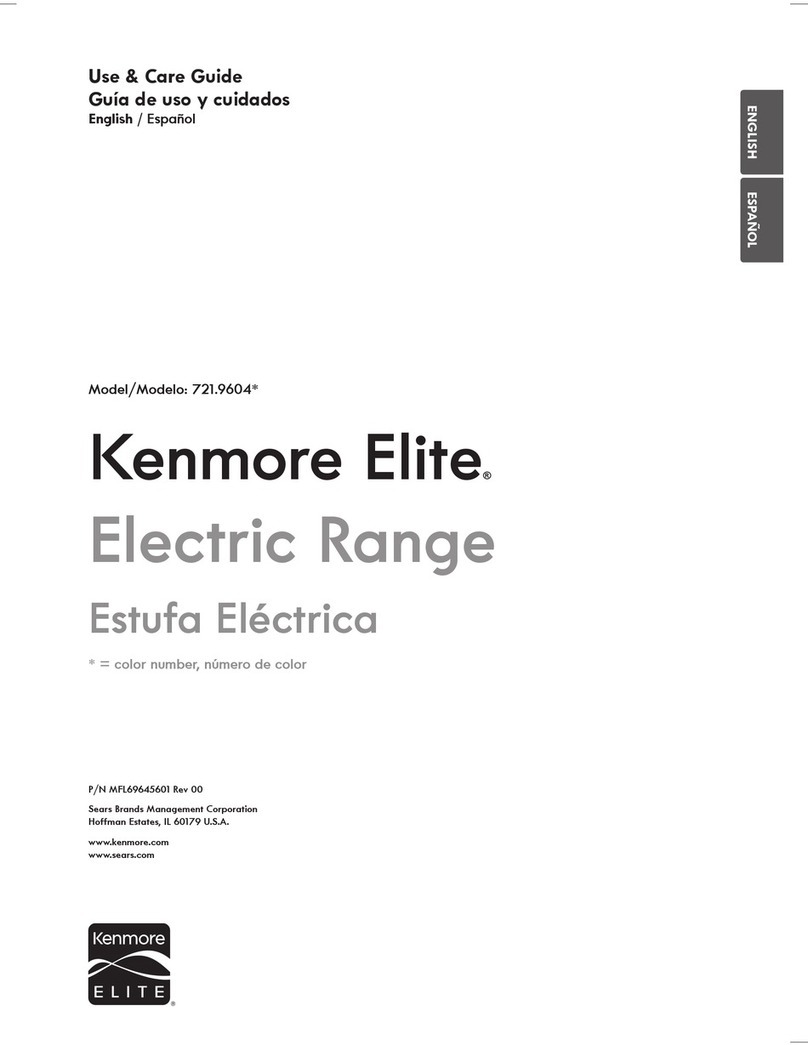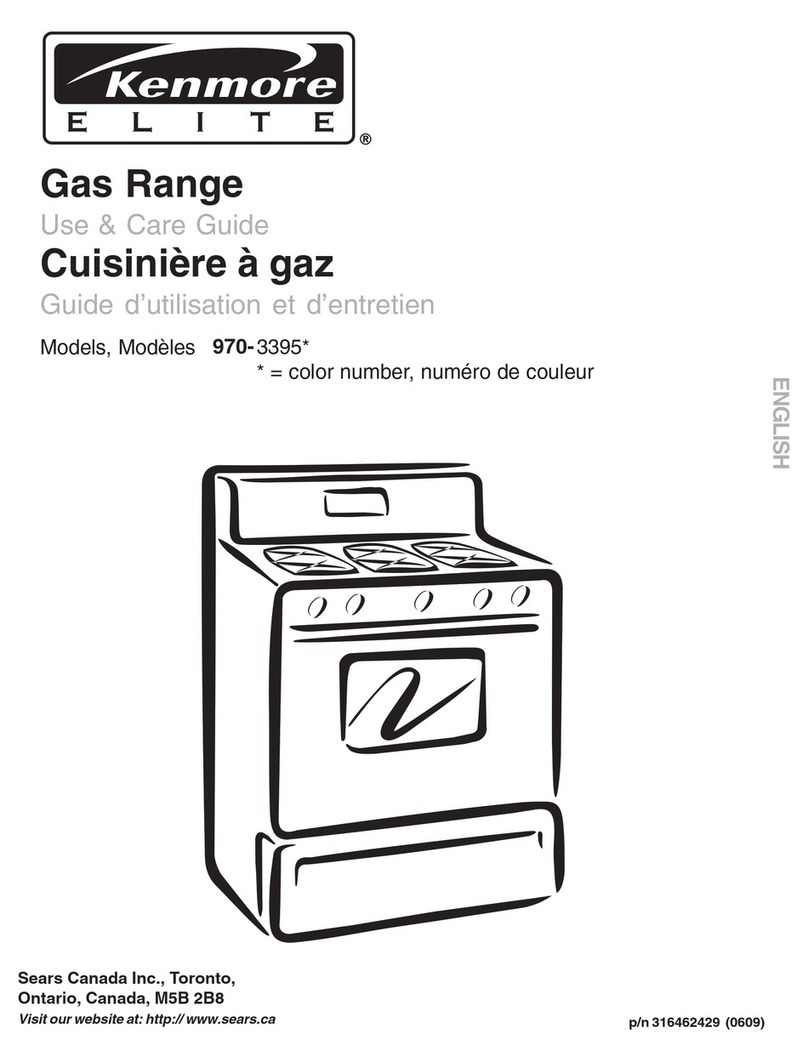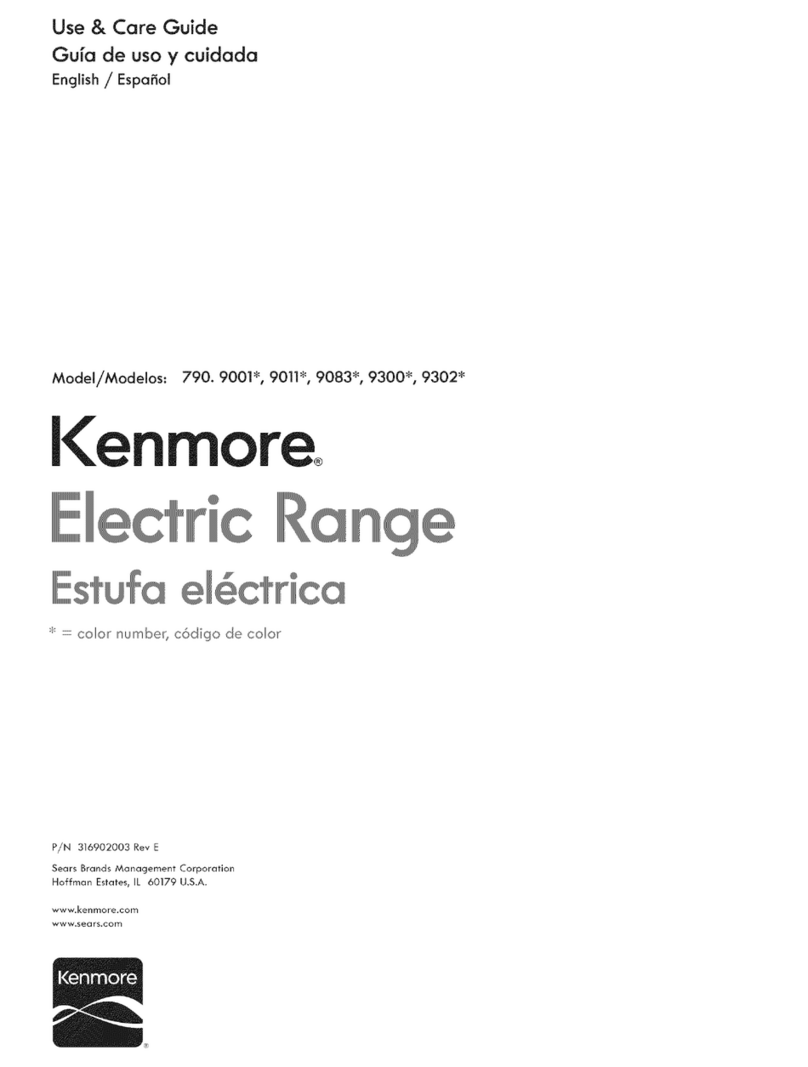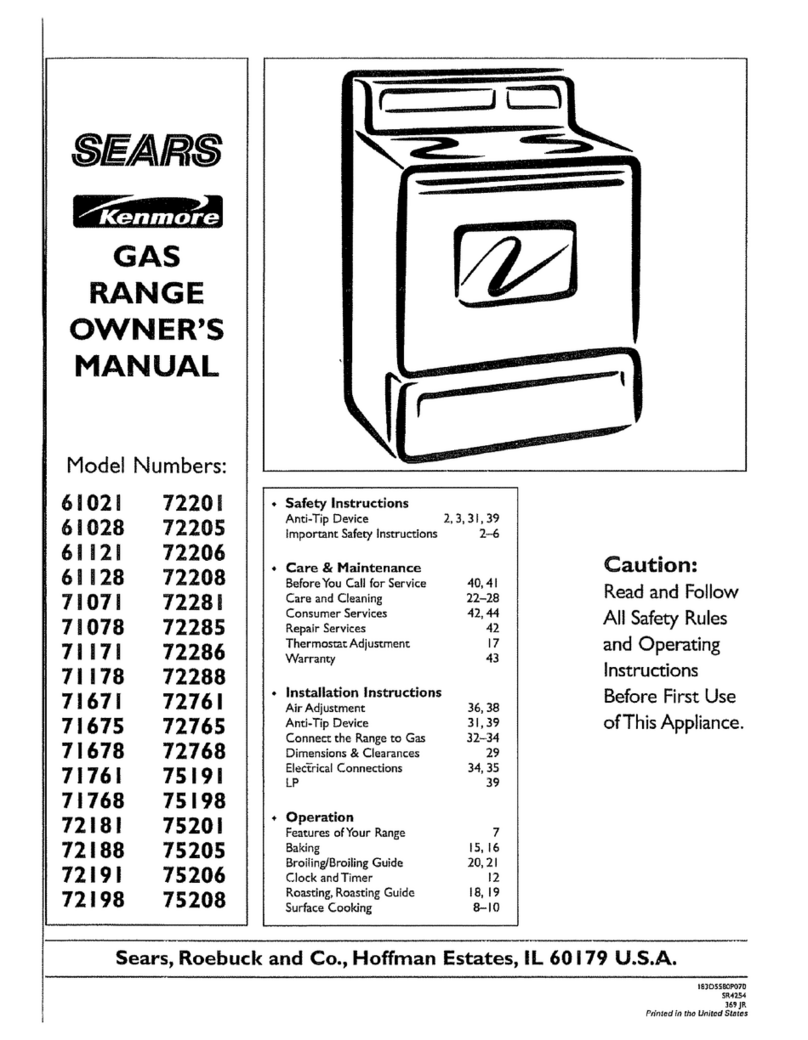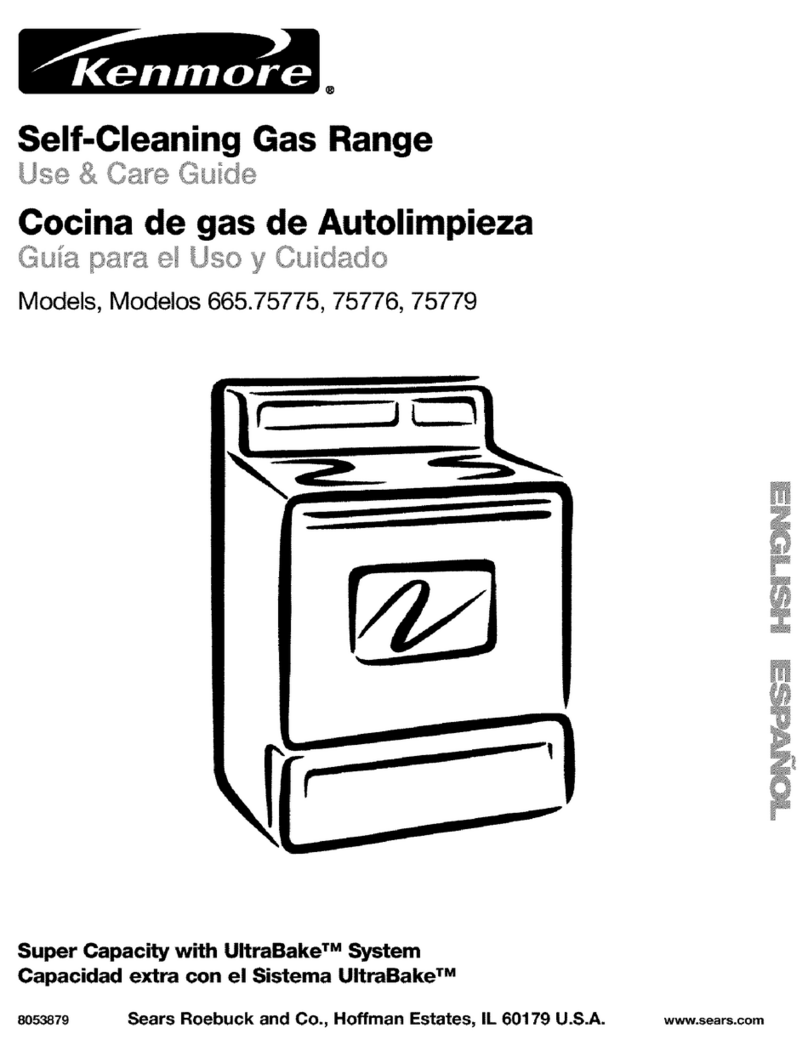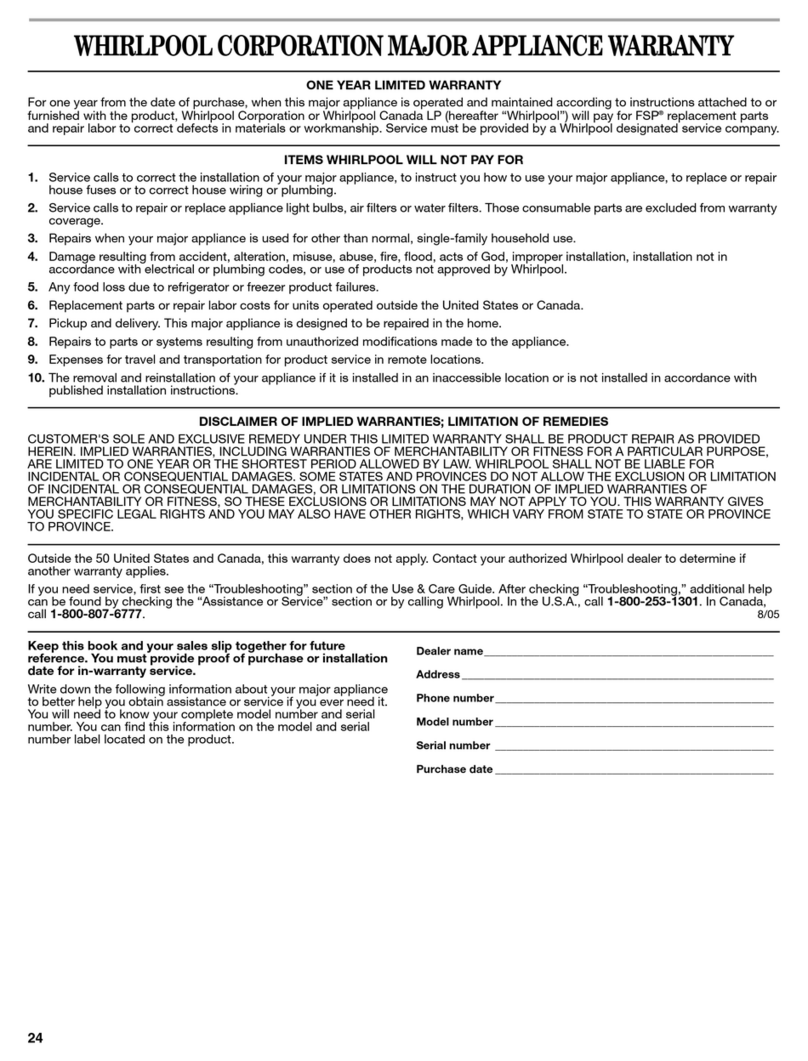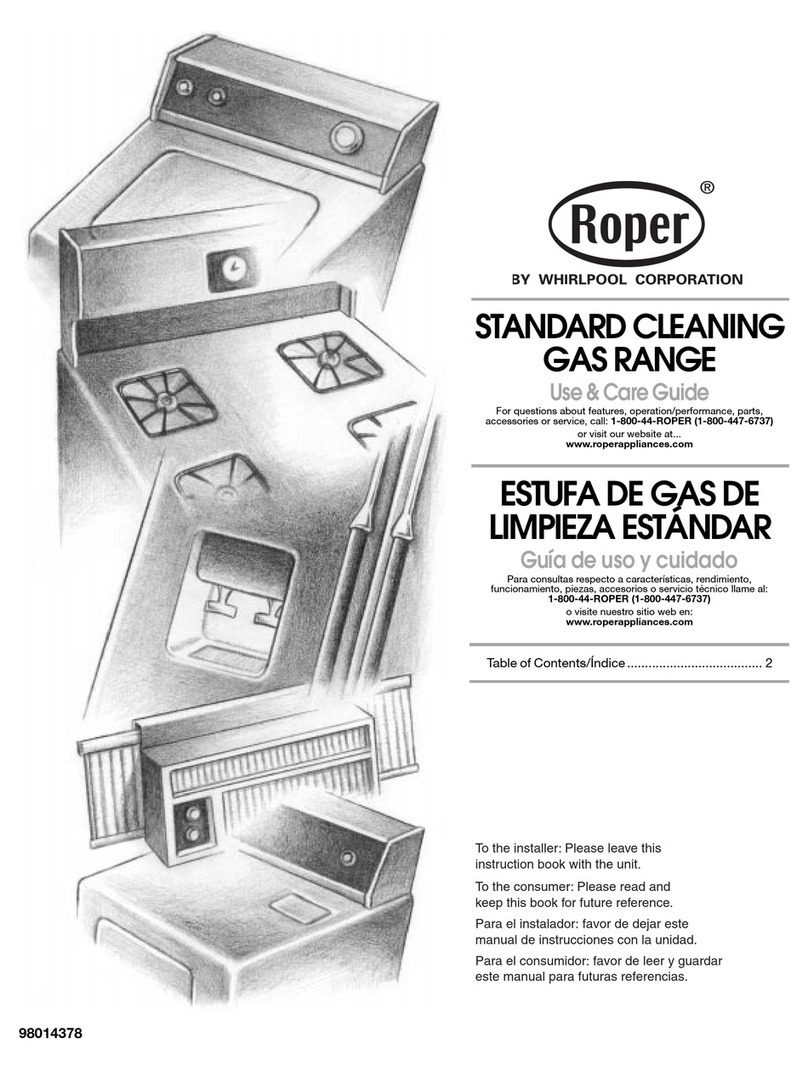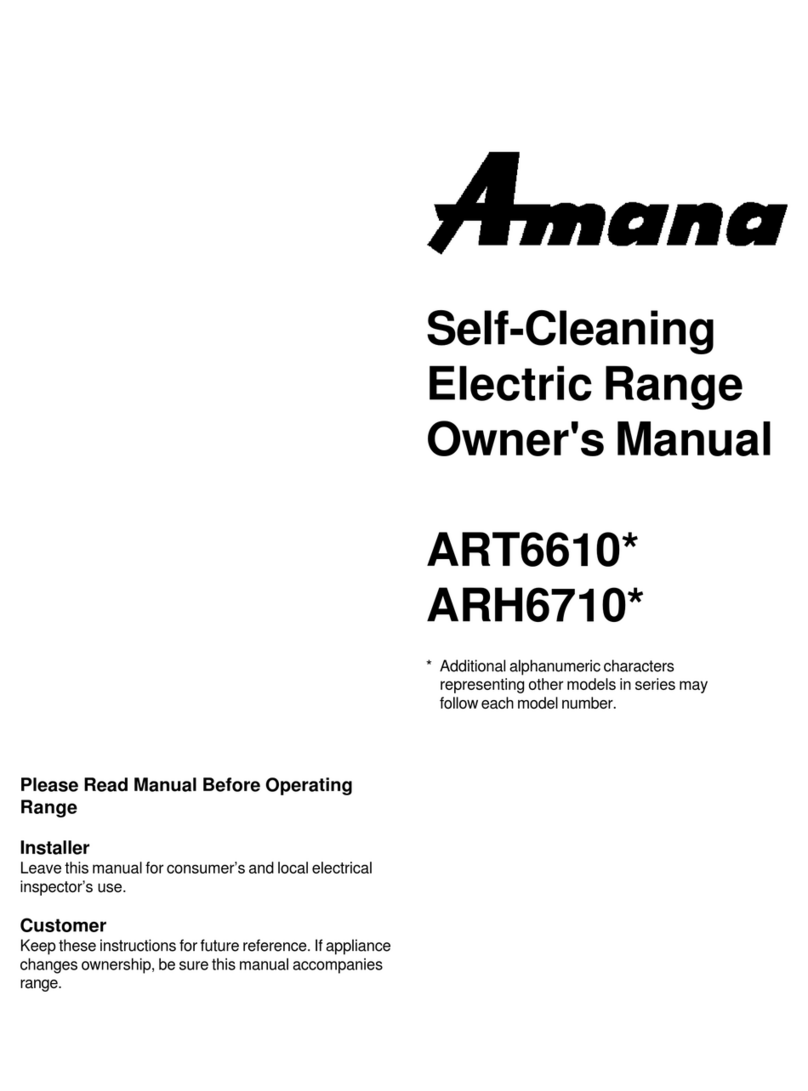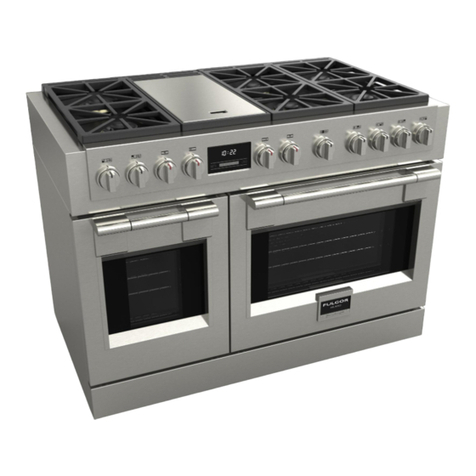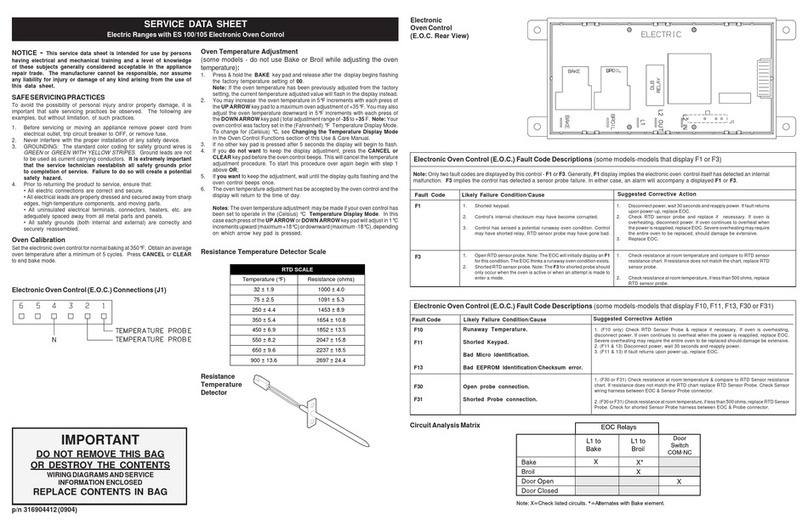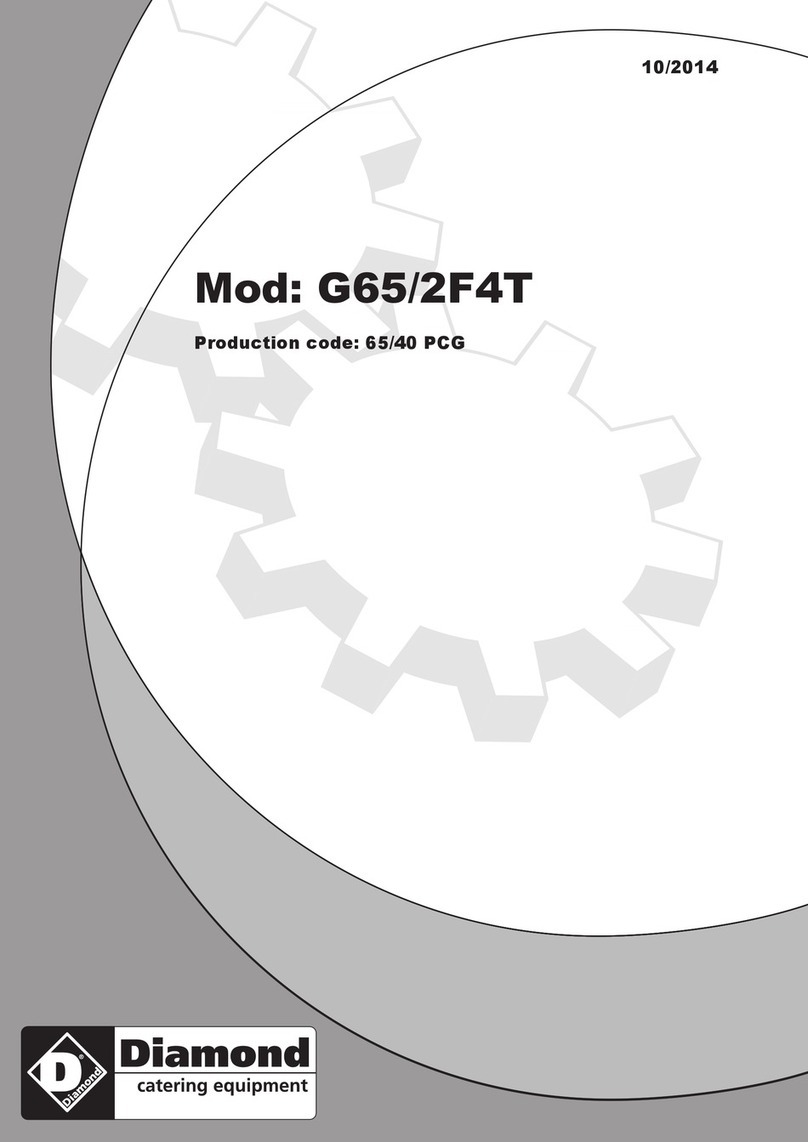
important Safety instructions
*Remove all tape and packaging before using the range.
Destroy the carton and plastic bags after unpacking
the range. Never allow children to play with packaging
material.
*Proper Installatlon--Be sure your appliance is properly
installed and grounded by a qualified technician in
accordance with the National Fuel Gas Code ANSi
Z223.- latest edition, or in Canada CAN/CGA B149.1,
and CAN/CGA B149.2, and the National Electrical
Code ANSI/NFPA No.70-iatest edition, or in Canada
CSA Standard C22.1, Canadian Electrical Code, Part 1,
and local code requirements. Install only per installation
instructions provided in the literature package for this
range. Ask your dealer to recommend a qualified
technician and an authorized repair service. Know how to
disconnect the power to the range at the circuit breaker
or fuse box in case of an emergency.
* User servlclng--Do not repair or replace any part of
the appliance unless speclfically recommended in the
manuals. All other servicing should be done only by a
qualified technician, This may reduce the risk of personal
injury and damage to the range.
*Never modify or alter the construction of a range by
removing the leveling legs, panels, wire covers, antl-tip
brackets/screws, or any other part of the range.
*Remove the oven door from any unused range if it is to be
stored or discarded.
*For electric ignition models only: Do not attempt to
operate the range during a power failure. If the power
fails, always turn off: the range. If the range is not turned
off: and the power resumes, the range will begin to
operate again. Once the power resumes, reset the clock
and oven function
NEVER use this appllance as a space
heater to heat or warm the room. Doing so may result in
CARBON MONOXIDE poisoning.
NEVER cover any slots, holes or passag-
es in the oven bottom or cover an entire oven rack with
materials such as aluminum foil. Doing so blocks air flow
through the oven and may cause CARBON MONOXIDE
poisoning. Aluminum fall linings may trap heat, causing a
fire hazard.
Stepping, leaning or sitting on the door or
drawers of a range can result in serious injuries and also
cause damage to the appliance. DO NOT allow children
to climb or play around the range. The weight of a child on
an open oven door may cause the range to tip, resulting in
serious burns or other injury.
Storage in or on appliance m flammable
materlals should not be stored in an oven, near surface
units or in the storage drawer, warmer drawer or lower
oven. This includes paper, plastic and cloth items, such as
cookbooks, plasticware and towels, as well as flammable
liquids. Do not store explosives, such as aerosol cans, on or
near the range.
DO NOT TOUCH SURFACE BURNERS,
AREAS NEAR THESE BURNERS, OVEN BURNERS OR
INTERIOR SURFACES OF THE OVEN. Both surface and
oven burners may be hot even though flames are not visible.
Areas near surface burners may become hot enough to
cause burns. During and after use, do not touch, or let
clothing or other flammable materials touch these areas
until they have had sufficient time to cool. Among these
areas are the cook top, surfaces facing the cook top, the
oven vent openings and surfaces near these openings, oven
door and window.
Wear proper apparel -- loose-fitting or
hanging garments should never be worn while using the
appliance. Do not let clothing or other flammable materials
contact hot surfaces.
Do not use water or flour on grease fires
smother the fire with a pan lld, or use baking soda, a dry
chemlcal or foam-type extinguisher.
When heating fat or grease, watch it
closely. Fat or grease may catch fire if allowed to become
too hot.
Use dry potholders m moist or damp
potholders on hot surfaces may result in burns from steam.
Do not let potholders touch hot heating elements. Do not
use a towel or other bulky cloth instead of a potholden
Do not heat unopened food containers
buildup of pressure may cause container to burst and
result in injury.


